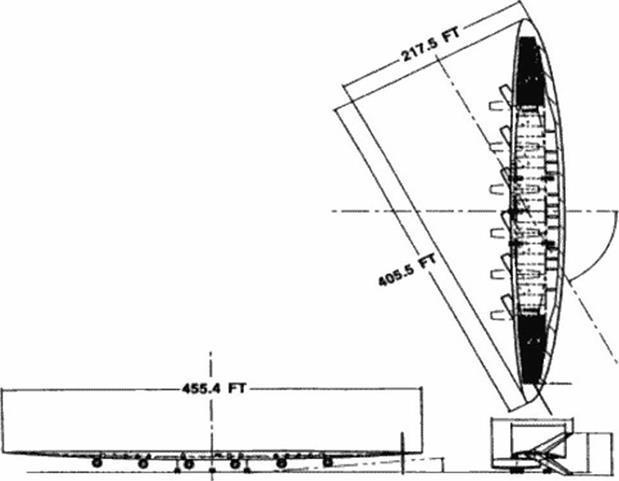McDonnell Douglas Studies
The studies by McDonnell Douglas Aerospace West have already been used to provide guidance on how many passengers a large OFW’ might carry, how much it might weigh, and at what speeds and altitudes it might fly. They first considered a Mach 1.6 wing swept to 68 degrees (418]. This is the design tested by NASA. They subsequently studied OFW’ designs for Mach numbers of 0.85,0.95. and 1.3 over a large range of sizes. These designs were compared to point designs for a conventional subsonic transport and a blended wing body at M = 0.85. At this Mach number the blended wing body shows greater promise.
A subsequent study concluded that a Mach 1.3. 750-800 passenger OFW. with a 5200 nautical mile range, would require an unswept aspect ratio of about 10 |419J. With a passenger cabin height of 82 inches and a nominal airfoil thickness of 17%. the chord becomes about 55 feet and the span about 455 feet. This results in a wing area of 20.788 square feet, a volume of 109.660 cubic feet, and an aircraft takeoff gross weight of 1.6 million pounds, with 0.75 million of this weight in fuel. A sweep angle of 62.5 degrees was used; with M = 1.3 this provides a nominal normal Mach number of 0.6 and an estimated UD of 10.75. This aircraft is depicted in Figure 145.
|
Figure 145 McDonnell Douglas A# = 1.3 OFW capable of carrying 800 passengers 5146 nautical miles (Ref. {419]). |














